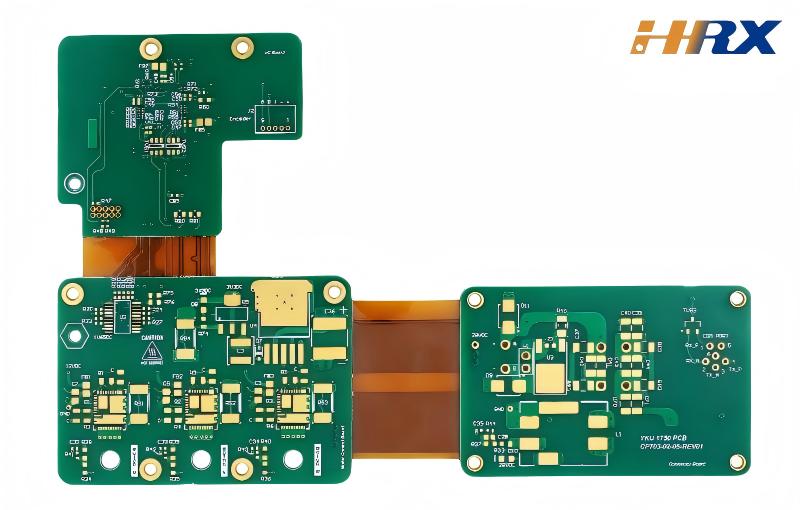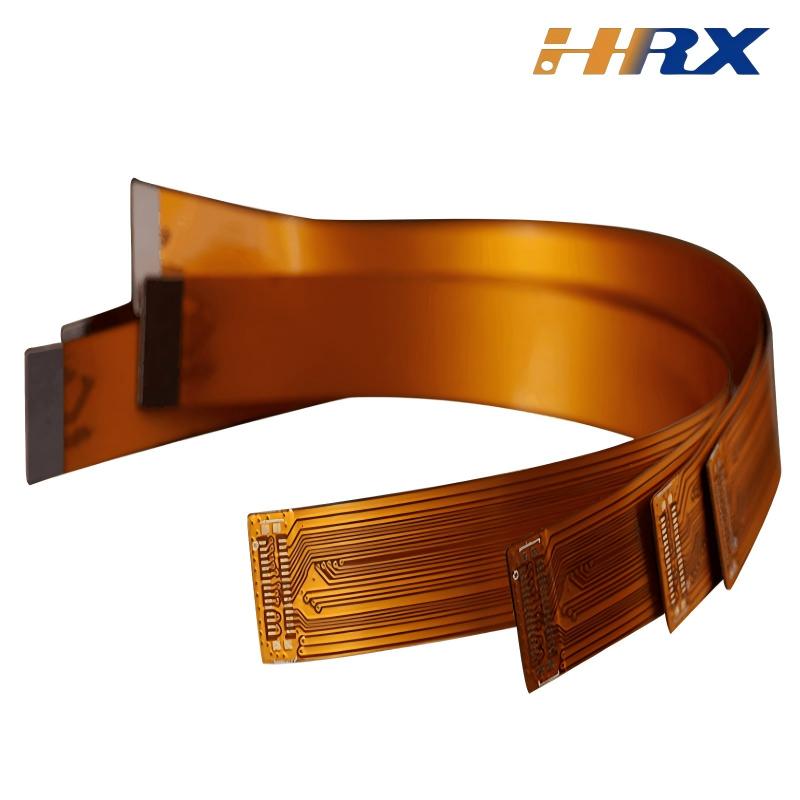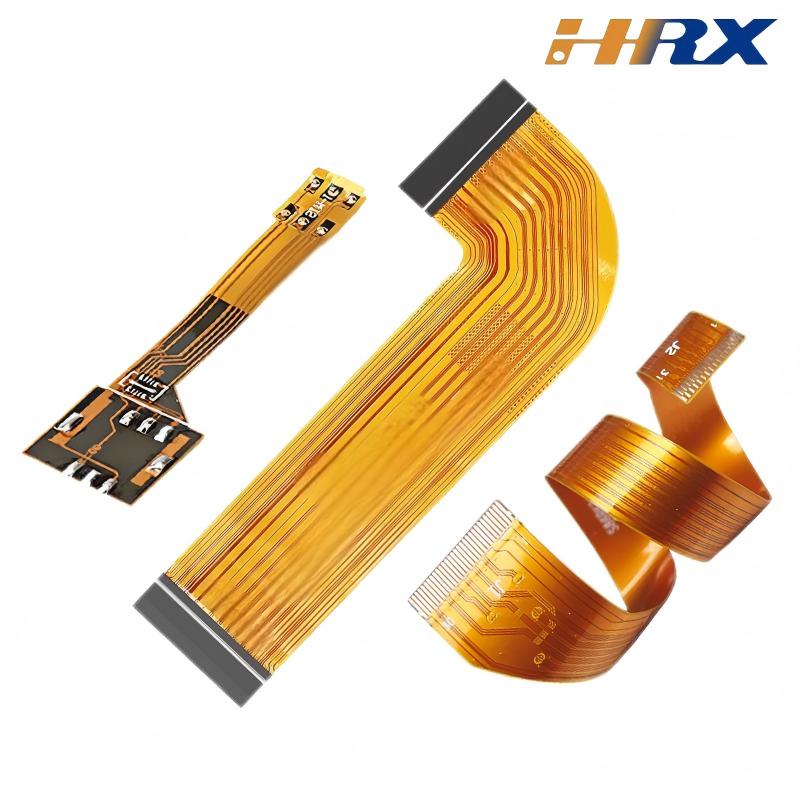Search
The Critical Role of Quality Inspection in the Full Lifecycle of Rigid-Flex PCBs
- Jun 02,2025
-
Share
In the dynamic landscape of rigid-flex printed circuit board (RFPC) engineering, quality inspection serves as the backbone of reliability, performance, and compliance at every stage—from design validation to end-use application. As a global leader in FPC (flexible printed circuits), PCB (printed circuit boards), and rigid-flex manufacturing, Shenzhen Huaruixin Electronics understands that robust quality control (QC) is not just a checkpoint but a strategic imperative to mitigate risks and ensure long-term product success. Below is a detailed breakdown of how quality inspection influences each phase of the rigid-flex board lifecycle.

1. Design and Prototyping Phase: Preventing Flaws at the Source
DFM (Design for Manufacturing) Review:
Pre-production inspection ensures design files (e.g., Gerber data) align with manufacturing capabilities, such as minimum bend radius, layer thickness, and via-in-pad (VIP) feasibility. For example, analyzing flex-rigid interface transitions during DFM reduces risks of delamination or trace cracking post-fabrication.
Prototype Validation Testing:
Electrical Performance: Impedance testing verifies signal integrity in high-frequency designs (e.g., RF or USB4), while continuity tests catch routing errors in multilayer flex-rigid structures.
Mechanical Feasibility: Bend cycle testing on prototypes simulates real-world flexing to validate polyimide (PI) film durability and adhesive bond strength.
2. Material Procurement and Pre-Production: Ensuring Component Integrity
Incoming Material Inspection (IMI):
Component Authentication: X-ray fluorescence (XRF) analysis confirms metal composition in copper foils or solders, ensuring compliance with RoHS/REACH standards and preventing counterfeit materials.
Substrate Verification: Tensile strength testing on flexible base materials (e.g., PI, LCP) ensures they meet specification for elongation at break, critical for dynamic flex applications like robotics or medical devices.
Lot Traceability:
Barcode/QR code tracking of materials (e.g., adhesives, prepregs) enables full traceability, supporting ISO 9001:2015 compliance and rapid recall management if defects arise.
Professional Tip: Early material QC reduces costly reworks; for instance, detecting moisture absorption in FR-4 cores before lamination prevents post-bake delamination.
3. Manufacturing Stage: Real-Time Process Control
In-Line Inspection:
Automated Optical Inspection (AOI): Detects surface defects like misaligned solder masks, shorts, or open circuits in FPC-PCB hybrid layers during etching or soldermask application. AOI systems with AI-driven defect recognition improve accuracy to <0.1% false positives.
Laser Direct Imaging (LDI) Verification: Ensures precise pattern transfer for fine-pitch traces (down to 50μm) in flex regions, critical for high-density interconnect (HDI) rigid-flex boards.
Post-Processing Testing:
Buried/Via Resistance Testing: Measures resistance in blind/buried vias to validate plating consistency, a key failure mode in multilayer rigid-flex constructions.
Peel Strength Testing: Regularly checks adhesive bond quality between rigid (FR-4) and flex (PI) layers, ensuring compliance with IPC-6013 standards for flex-rigid boards.
4. Final Assembly and System Integration: Ensuring Functional Reliability
System-Level Electrical Testing:
Flying Probe Testing: Verifies net connectivity in complex assemblies, including rigid-flex-to-connector interfaces, where misalignment can cause intermittent failures.
Thermal Resistance Testing: Measures heat dissipation in power-critical areas (e.g., rigid layers with thermal vias), preventing overheating in automotive or industrial applications.
Mechanical Stress Validation:
Dynamic Bend Testing: Subjects boards to thousands of flex cycles to assess fatigue life of copper traces and coverlay adhesion, essential for wearable tech or aerospace actuation systems.
Vibration Testing: Simulates operational stress to identify loose components or micro-cracks in rigid-flex joints, a common issue in transportation or aerospace environments.
5. End-Use and Post-Market: Sustaining Long-Term Performance
Field Failure Analysis (FFA):
For returned products, cross-sectional microscopy and energy-dispersive X-ray spectroscopy (EDS) identify root causes like moisture ingress, thermal cycling fatigue, or mechanical overstress. This data informs design improvements for next-gen rigid-flex solutions.
Reliability Predictions:
Accelerated aging tests (e.g., 85°C/85% RH for 1,000 hours) estimate in-service lifespan, supporting warranty claims and customer trust in applications like medical implants (expected lifetime: 10+ years).
Industry Insight: Rigid-flex boards in aerospace must pass MIL-STD-810G environmental testing, where QC data directly impacts certification and mission success.
6. Regulatory and Compliance Assurance: Meeting Global Standards
Certification Testing:
Third-party audits (e.g., UL, IPC-A-620) validate compliance with safety, performance, and environmental standards. For example, RoHS-compliant solder and lead-free processes are verified via material testing reports.
Documentation Traceability:
Maintaining QC records (e.g., AOI logs, X-ray images) ensures compliance with AS9100 (aerospace) or ISO 13485 (medical devices), where traceability is a regulatory mandate.
Conclusion: Quality Inspection as a Lifecycle Enabler
At Shenzhen Huaruixin Electronics, we recognize that quality inspection is not a standalone step but a holistic strategy that permeates every phase of rigid-flex board development. From DFM-driven design validation to post-market reliability analysis, each QC measure ensures our boards deliver unmatched performance in the most demanding environments.
For advanced rigid-flex solutions backed by end-to-end quality assurance, visit www.hrxfpc.com or contact sales@hrxfpc.com. Let’s engineer durability, precision, and compliance into your next project—from concept to end-use and beyond.

Let’s talk! We’ll provide the perfect solution for you!
-
 Huaruixin Electronics mainly produces printed circuit boards as the core business, to provide customers with one-stop solutions for FPC/PCB production, components sourcing and Assembly.
Huaruixin Electronics mainly produces printed circuit boards as the core business, to provide customers with one-stop solutions for FPC/PCB production, components sourcing and Assembly. - WHAT WE DO — PCB Design Solutions — Flex PCB Production — Components Sourcing — FPC&PCB Assembly
- PRODUCTS — Single Sided Flexible Circuits — Double Sided Flexible Circuits — Multilayer Flexible Cirucits — Rigid-Flex Circuits — FPC Assembly — PCB Assembly
- CAPABILITY — FPC Capability — Rigid-Flex Capability — PCB Capability — Assembly Capability
- Copyright © 2024 Shenzhen Huaruixin Electronics Co., Ltd. All Rights Reserved.
- Design By BONTOP


